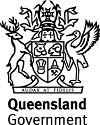Published Wednesday, 24 November, 2021 at 04:27 PM

Minister for the Environment and the Great Barrier Reef and Minister for Science and Youth Affairs
The Honourable Meaghan Scanlon

Queensland’s fire management to benefit from new rapid mapping technology
Scientists have developed an improved way of using satellite imagery to map where fires have occurred across Queensland, which will greatly improve Queensland’s fire management capabilities.
Science Minister Meaghan Scanlon said Queensland’s diverse landscapes, vegetation and soil types, combined with the effects of cloud, smoke and other landscape dynamics made it challenging to accurately map burned areas using satellite imagery.
“To address this issue, scientists from the Department of Environment and Science (DES) and the Joint Remote Sensing Research Program have worked together to develop a new way of mapping fire scars across the state, building on the state’s investment in these technologies,” Ms Scanlon said.
“This new methodology uses the European Space Agency’s high frequency Sentinel-2 satellite imagery combined with machine learning and specialised operational mapping technology to produce high quality state-wide maps of areas impacted by fire every month.
“With two identical satellites in orbit, the Sentinel-2 missions captures imagery for all parts of Queensland every 5 days, meaning the regularity of the monitoring will be frequent enough to capture most fires as they occur, providing a resource that will complement active fire maps.
“This method builds on previous work which mapped Queensland’s fire history using Landsat satellite imagery.
“The new fire scar maps detail the extent and changes in burnt areas in a way that can be easily used by land managers and emergency management agencies, such as the Queensland Parks and Wildlife Service and the Queensland Fire and Emergency Service, to improve future fire planning and management activities.
“Understanding exactly where and when a fire has occurred will help us to improve our predictive fire modelling capabilities, assist in the development of planned burn or hazard reduction programs, and allow us to monitor the ecological impacts of fire on biodiversity, land condition, water and air quality, and better quantify our greenhouse gas emissions.
QFES Commissioner Greg Leach said the new DES product has already proven to be an important tool for QFES.
“This tool enhances QFES’ predictive services capability in the generation of bushfire intelligence and mitigation strategies,” he said.
“It is a key component of QFES’ fire history data set which is used to inform our fire modelling technology and predictions as they occur by considering the available fuel on that landscape for the fire to consume.
“Knowing what areas have burnt previously also provides vital hazard reduction burn considerations as we work with our partners, including the community, to mitigate the risk of bushfires.”
Fire scar maps will be delivered monthly and are publicly available through the Queensland Government’s Open Data portal and the North Australian Fire Information portal.
For more information visit: https://www.qld.gov.au/environment/land/management/mapping/statewide-monitoring/firescar
ENDS
Media contact: DES Media Unit on (07) 3339 5831 or media@des.qld.gov.au

